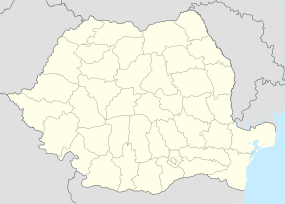Arcidava

Arcidava on the Roman Dacia map.
|
|
| Alternate name | Argidaua, Arcidava, Arcidaua, Argedava, Argedauon, Argedabon, Sargedava, Sargedauon, Zargedava, Zargedauon |
|---|---|
| Location | Poiana Flămânda, Vărădia, Caraş-Severin County, Romania |
| Coordinates | 45°05′N 21°33′E / 45.08°N 21.55°ECoordinates: 45°05′N 21°33′E / 45.08°N 21.55°E |
| History | |
| Cultures | Albocense |
| Site notes | |
| Condition | Ruined |
| Reference no. | CS-I-s-B-10894 |
Argidava (Argidaua, Arcidava, Arcidaua, Argedava, Argedauon, Argedabon, Sargedava, Sargedauon, Zargedava, Zargedauon, Ancient Greek: Ἀργίδαυα, Αργεδαυον, Αργεδαβον, Σαργεδαυον) was a Dacian fortress town close to the Danube, inhabited and governed by the Albocense. Located in today's Vărădia, Caraş-Severin County, Romania.
After the Roman conquest of Dacia, it became a military and a civilian center, with a castrum (Roman fort) (see Castra Arcidava) built in the area. The fort was used to monitor the shores of the Danube.
The oldest found potential reference to Argidava is in the form Argedauon or Argedabon (Ancient Greek: Αργεδαυον, Αργεδαβον), written in stone, in the Decree of Dionysopolis (48 BC). This decree was written by the citizens of Dionysopolis to Akornion, who traveled far away in a diplomatic mission to meet somebody's farther in Argedauon/Argedabon. The decree, a fragmentary marble inscription, is located in the National Museum in Sofia.
The inscription also refers to the Dacian king Burebista, and one interpretation is that Akornion was his chief adviser (Ancient Greek: πρῶτοσφίλος, literally "first friend") in Dionysopolis. Other sources indicate that Akornion was sent as an ambassador of Burebista to Pompey, to discuss an alliance against Julius Caesar.
...
Wikipedia

